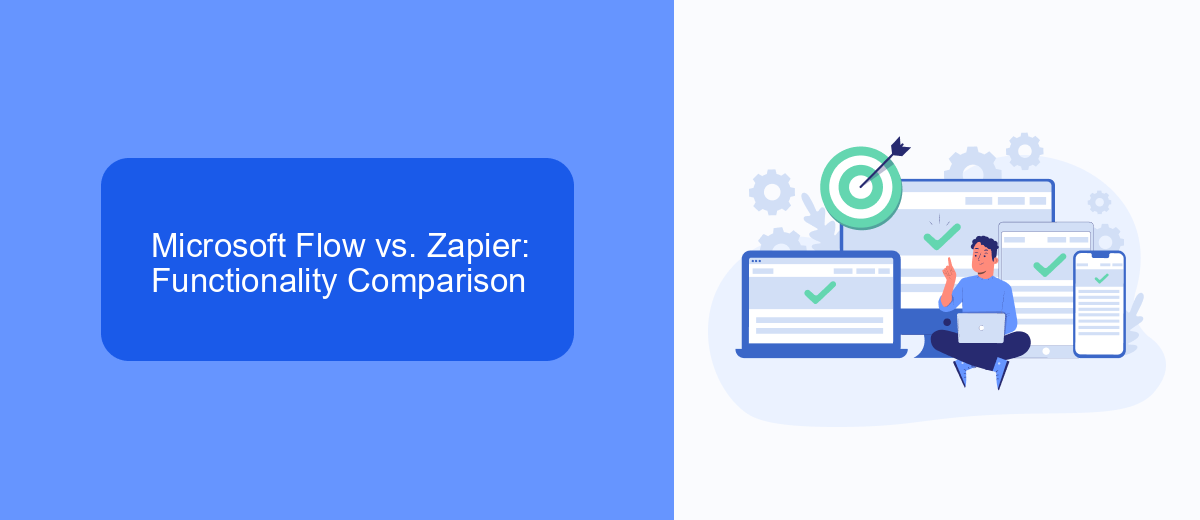When it comes to automating workflows and enhancing productivity, Microsoft Flow (now known as Power Automate) and Zapier are two of the leading tools in the market. Both platforms offer robust features for integrating various apps and services, but they cater to different user needs and preferences. This article will compare Microsoft Flow and Zapier to help you decide which is the best fit for your automation requirements.
Introduction
In today's fast-paced digital world, automation tools have become essential for streamlining workflows and enhancing productivity. Microsoft Flow (now known as Power Automate) and Zapier are two leading platforms that allow users to automate tasks by connecting different applications and services. Both tools offer unique features and capabilities, making it crucial to understand their differences to choose the right one for your needs.
- Microsoft Flow (Power Automate) - Integrates seamlessly with Microsoft products and offers advanced automation options.
- Zapier - Known for its user-friendly interface and extensive library of supported apps, making it ideal for a wide range of users.
- SaveMyLeads - A specialized service that simplifies the process of setting up integrations, particularly useful for lead management and marketing automation.
This article will explore the key features, advantages, and limitations of Microsoft Flow and Zapier, providing you with a comprehensive comparison to help you make an informed decision. Whether you're a business owner, a marketer, or a developer, understanding these tools will empower you to optimize your workflows and achieve greater efficiency.
Microsoft Flow vs. Zapier: Functionality Comparison

Microsoft Flow, now known as Power Automate, and Zapier are both powerful automation tools, but they cater to slightly different needs. Power Automate is deeply integrated with the Microsoft ecosystem, offering robust automation capabilities for Office 365, Dynamics 365, and other Microsoft services. It supports complex workflows and conditional logic, making it ideal for enterprises heavily invested in Microsoft products. On the other hand, Zapier excels in its simplicity and extensive app integrations, supporting over 3,000 applications. This makes it a versatile choice for small to medium-sized businesses looking to automate tasks across a wide range of third-party applications.
While both platforms offer pre-built templates to get users started quickly, Power Automate's strength lies in its advanced features such as AI Builder and RPA (Robotic Process Automation). Zapier, however, focuses on ease of use and accessibility, allowing users to create "Zaps" with minimal technical knowledge. For users seeking to streamline lead management, services like SaveMyLeads can further enhance these platforms by automating the transfer of leads from various sources into CRM systems, ensuring no potential customer is overlooked.
Microsoft Flow vs. Zapier: User Experience and Accessibility

When comparing Microsoft Flow and Zapier, user experience and accessibility are crucial factors to consider. Both platforms aim to streamline workflows and automate tasks, but they approach these goals differently.
- Interface Design: Microsoft Flow offers a more integrated experience with other Microsoft products, making it intuitive for users already familiar with the Microsoft ecosystem. Zapier, on the other hand, boasts a clean, user-friendly interface that is easy to navigate even for beginners.
- Accessibility: Zapier supports a wide array of third-party apps, providing extensive options for integrations. Microsoft Flow focuses on deep integration with Microsoft services but also supports other applications. For those looking for additional help in setting up integrations, services like SaveMyLeads can simplify the process by offering pre-built workflows and easy-to-use tools.
- Customization: Both platforms allow for customization, but Zapier provides more flexibility with its extensive library of apps and triggers. Microsoft Flow excels in scenarios where users need to automate tasks within the Microsoft suite.
Ultimately, the choice between Microsoft Flow and Zapier depends on your specific needs. If you are heavily invested in the Microsoft ecosystem, Microsoft Flow might be the better option. However, if you require a broader range of integrations and a user-friendly interface, Zapier could be the ideal choice.
Microsoft Flow vs. Zapier: Pricing

When comparing Microsoft Flow and Zapier, pricing is a crucial factor to consider. Both platforms offer different pricing models that cater to various user needs, from individuals to large enterprises. Microsoft Flow, now known as Power Automate, provides a more flexible pricing structure with both free and premium plans, while Zapier offers tiered pricing based on the number of tasks and features.
Microsoft Flow offers a free plan that includes basic automation features and a limited number of runs per month. For more advanced functionalities, users can opt for premium plans starting at per user per month. Zapier, on the other hand, offers a free plan with limited tasks and a variety of paid plans starting at .99 per month, which include more tasks and advanced features.
- Microsoft Flow: Free plan, Premium plans starting at /user/month
- Zapier: Free plan, Paid plans starting at .99/month
For those looking to integrate multiple services seamlessly, SaveMyLeads offers an additional option. This platform specializes in connecting various applications, providing an alternative to both Microsoft Flow and Zapier with competitive pricing and a user-friendly interface. Choosing the right platform depends on your specific needs and budget.
Conclusion
In conclusion, both Microsoft Flow and Zapier offer robust automation solutions tailored to different user needs. Microsoft Flow, now known as Power Automate, excels in its seamless integration with the Microsoft ecosystem, making it an ideal choice for businesses heavily invested in Microsoft products. On the other hand, Zapier's extensive library of supported apps and user-friendly interface make it a versatile option for those seeking broad connectivity across various platforms.
When choosing between the two, consider your specific requirements, such as the complexity of workflows, the range of applications you need to integrate, and your existing software infrastructure. Additionally, platforms like SaveMyLeads can further simplify the process of setting up integrations, offering a streamlined approach to connecting different services. Ultimately, the best tool for you will depend on your unique business needs and the specific functionalities you prioritize.


FAQ
What are the key differences between Microsoft Flow and Zapier?
Which platform is more user-friendly for beginners?
Can both platforms handle complex workflows?
How do the pricing models compare?
Is there an alternative to these platforms for integrating and automating workflows?
Personalized responses to new clients from Facebook/Instagram. Receiving data on new orders in real time. Prompt delivery of information to all employees who are involved in lead processing. All this can be done automatically. With the SaveMyLeads service, you will be able to easily create integrations for Facebook Lead Ads and implement automation. Set up the integration once and let it do the chores every day.
